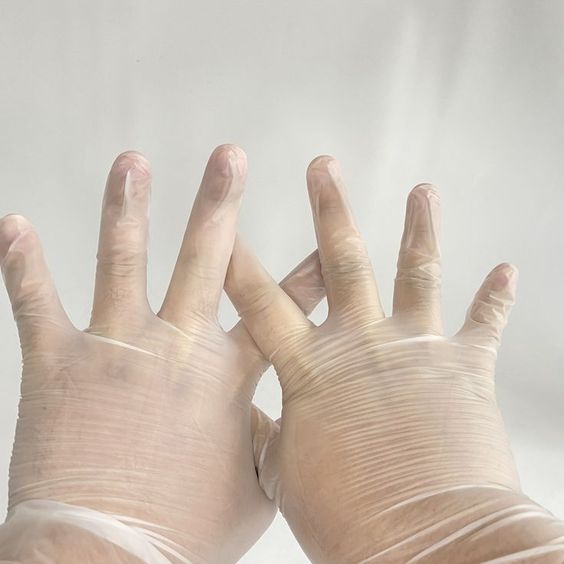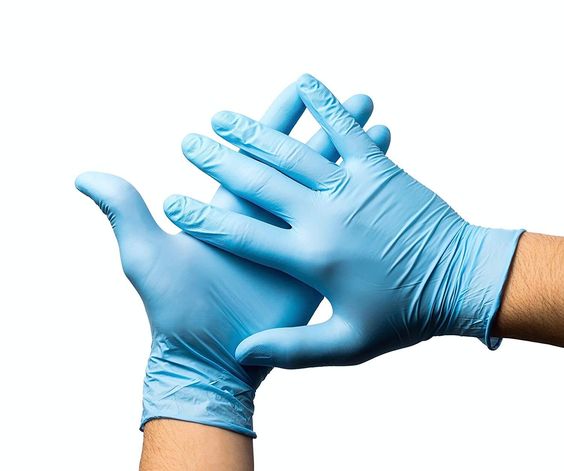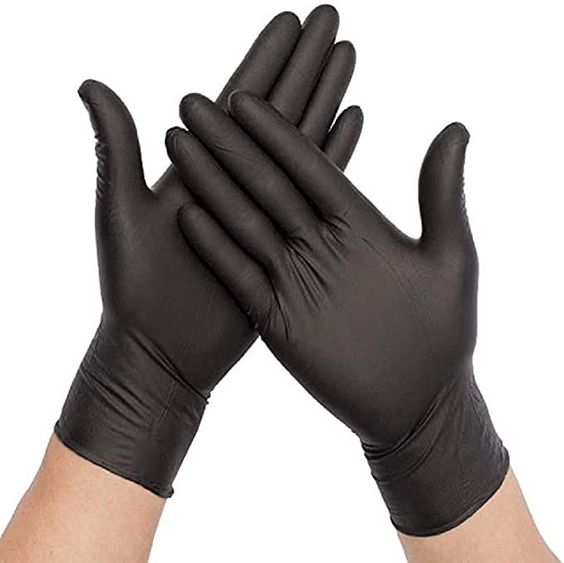- Depending on the needs, different industries use vinyl, nitrile, and latex gloves
- Vinyl gloves are cost-effective products and an excellent option for individuals with latex allergies
- Latex gloves are made of biodegradable materials, they are flexible, highly elastic, and suitable for high-precision actions
- Nitrile gloves have high tolerance for corrosive substances, oil-based chemicals, and biohazards
Gloves are an essential tool in the medical industry. They are the first line of defense for healthcare workers against harmful substances and infections. However, gloves are used in almost every industry today. From surgeons and doctors to laboratory technicians, mechanics, and factory workers, all use disposable gloves.
With the appearance of the COVID-19 pandemic, many felt an even greater need to put a protective barrier on their skin. Disposable gloves were on the what to pack for trip lists of many people during this troubling period in human history.
There is always a debate about which disposable gloves are better. Some prefer vinyl gloves, while others go for nitrile or latex gloves. The choice of the right glove mainly depends on the industry or the task at hand.
We gathered some important information to help you select which disposable gloves are right for you.
- Types of Disposable Gloves
- What Are Vinyl Gloves?
- What Are Nitrile Gloves?
- Latex Gloves
- Difference Between Disposable Gloves
- Use of Disposable Glove in Various Situations
- Are Disposable Gloves Biodegradable?
- How to Remove And Dispose of Contaminated Gloves
- Removing Contaminated Gloves
- Which Gloves Are Better: Vinyl, Nitrile, or Latex?
Types of Disposable Gloves
When looking for disposable gloves, we face many choices and decisions. You will find different types of disposable gloves that differ based on materials, sizes, quality, choice of manufacturer, and more.
Disposable glove manufacturers are constantly working to improve their products. Vinyl, nitrile, and latex gloves all have similarities, yet there are slight differences that you need to consider. If you suffer from allergy issues, you may want to look for rubber-free or powder-free gloves.
What Are Vinyl Gloves?
Vinyl gloves are affordable and latex free gloves made from a petroleum-derived synthetic polymer. They are found at just about any retailer and are suitable for performing low-risk tasks that don’t involve hazards and infections.
These gloves are flexible and thin, offering high touch sensitivity. This easily manufactured product is an excellent option for individuals with latex allergies.
Industries Using Vinyl Gloves

These cost-effective and widely available products are not suitable for high-risk tasks. They are widely used for cleaning operations and situations that don’t involve corrosive chemicals. Tasks that require the use of vinyl gloves are:
- DIY and painting projects
- Food handling and food service
- Cleaning
- Working with wires and cords
- Protecting the hands of hairdressers
- Changing diapers
The FDA has approved vinyl gloves for medical use, also. These are so-called medical-grade vinyl exam gloves. They are designed for exposure to bodily fluids during examinations and use in surgical procedures.
Benefits of Vinyl Gloves
Versatility and durability are the main advantages of vinyl gloves. The reasonably priced powder free vinyl gloves are an excellent choice for those suffering from an allergic reaction to latex. Rashes, inflammations, and skin irritations are no fun.
Being naturally anti-static, vinyl gloves protect from chafing and shocks. It’s a suitable choice for electricians to prevent injury when stripping back sheaths on wires and power cords.
What Are Nitrile Gloves?
Acrylonitrile-butadiene rubber is the main component used in nitrile gloves. It’s the reason they have high tolerance for corrosive substances, oil-based chemicals, and biohazards.
Industries Using Nitrile Gloves

These gloves are no news to those who have to “get really dirty”. They are used in a large number of industries, including:
- Beauty industry
- Medical industry
- Tattoo and piercing shops
- Warehouses
- Waste management facilities
- Manufacturing Industry
Benefits of Nitrile Gloves
Just like vinyl gloves, these gloves come with many benefits. They are flexible, resistant to acids and solvents, and they are puncture-resistant. To reduce the chance of cross contamination when removing the gloves, they are made powder-free.
These gloves are also latex free, so skin irritation will not be a problem. However, there are cases when users have experienced hives and itching when using these gloves. If you are inclined to allergies, look for potential irritation signs.
Latex Gloves
Latex gloves have been one of the most popular disposable gloves for years. They are flexible, highly elastic, and suitable for high-precision actions. They are made of thin latex rubber, excellent for detail-oriented tasks, and offer touch sensitivity.
Industries Using Latex Gloves

Being a veteran among gloves, latex gloves are widely used across many industries.
- Hospitality industry
- Cleaning industry
- Medical industry
- Food service and preparation
- Veterinary
- Beauty industry
- Home improvement and DIY projects
Benefits of Latex Gloves
If allergies are not an issue, the use of latex gloves is possible in almost all medical environments. They held the top spot for best medical gloves for decades. Why? Because they are highly recommended for the protection against bloodborne pathogens.
They are also excellent for preventing cross contamination and protecting against potentially harmful substances. It’s a cost-effective solution offering high touch sensitivity, assuming you are not allergic to latex.
Difference Between Disposable Gloves
All disposable gloves have more or less similar use to other gloves. However, the secret is in the details. The main difference is in the degree of protection and durability, among other things.
While nitrile and vinyl gloves are latex free and waterproof, latex gloves may cause allergies. Out of the three types, latex is the most eco-friendly as it comes from a natural source.
Latex and vinyl gloves are known to tear and break easily, unlike nitrile ones. These have a stronger structure, are more resistant, and can be used longer. It’s also why they are the most expensive.
Latex and nitrile gloves have a better and more comfortable fit on the skin. Unlike them, vinyl gloves are sometimes considered uncomfortable because of the looser fitting.
Use of Disposable Glove in Various Situations
Vinyl gloves are great to use in the kitchen and protect the food from skin contact. They are used for preparing snacks, meals, and drinks. However, users should refrain from handling fatty foods with them. Fatty foods go better with nitrile, a better glove option for this task.
As a more expensive option, a nitrile pair of gloves is best for use in laboratories when handling sodium peroxide. This is not an environment to use vinyl gloves, while latex can offer medium-level protection, but not for every chemical. Always check if a glove can be used with and handle a particular chemical.
While a nitrile pair comes highly recommended when hazardous materials are concerned, don’t use them when working with electricity. Why? Because nitrile can act as an insulator when dealing with strong electrical resistance. Vinyl is the star here, being a natural anti-static.
Are Disposable Gloves Biodegradable?
Considering the climate changes we are experiencing, using eco-friendly and biodegradable materials is a preferred topic. Disposable gloves are used in high numbers daily, so toxic material often ends up in oceans and impacts our lives.
Latex is the only eco-friendly material and takes around five years for latex to degrade.
Nitrile and vinyl gloves take a long time before breaking down, which is a disadvantage. Being synthetic, vinyl consists of plasticizers and PVC, which is one of the reasons it’s so affordable. This is also why vinyl gloves’ shelf life is longer.
How to Remove And Dispose of Contaminated Gloves
When using disposable gloves, don’t forget that you should not just throw them in the trash. The germs you are trying to protect yourself from are on the gloves, so proper disposal is a must. Otherwise, you or other people can come in contact with these germs and other dangerous substances.
Removing Contaminated Gloves
Proper removal of gloves reduces the risk of exposure to the germs and bacteria. How to properly remove them?
- Grasp the glove’s edge near the wrist
- Peel it away by turning the glove inside out
- Using the ungloved fingers, slide them between the wrist and the glove
- Be extremely careful, and don’t touch the outside of the glove
- Using the inserted fingers, peel the glove off, again turning it inside out
- Both gloves should now be safely tucked inside the second glove
- Dispose of the gloves
Disposal of Contaminated Gloves
Disposing of gloves is one of the most critical steps. Improper disposal can lead to the spreading of hazardous substances and viruses. This is why disposing of gloves used for medical purposes is done in special medical waste bins.
Medical staff often use gloves when in contact with patients. These gloves are covered with bodily fluids, viruses, and other substances. They use medical waste bins to stop the spread of contamination.
Which Gloves Are Better: Vinyl, Nitrile, or Latex?
There is no wrong or right choice of disposable gloves, only the right choice for you. They all have their advantages and disadvantages, but it all comes down to what you will do with the gloves.
Although they are synthetic, vinyl gloves are the least expensive option for large consumers. Their versatility also increases the demand. They come as powder free vinyl gloves in several thicknesses and sizes.
Choosing the right size gloves won’t give you the perfect fit like you’ll get with nitrile or latex gloves. However, disposable vinyl gloves will do the job if you don’t require tactile precision. For the more heavy-duty work in the lab or a factory, nitrile and latex gloves will do.









